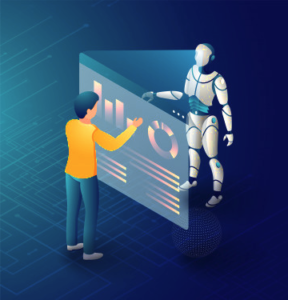The retail industry has to contend with a monumental shift in the outlook of customers toward selecting and purchasing goods and services more and more. Millennials and the middle-aged segment of buyers, in particular, lean more toward e-retail options than swanky stores. Quick deliveries, lucrative discounts, and personalized shopping recommendations are fast becoming the basic yardsticks of buyer expectations.
This may often lead to the impression that retail businesses are dying out. However, this perception couldn’t be any farther removed from the truth. The retail industry is booming more than ever before, just in a different sphere – the digital space. The e-commerce revolution ushered in by the likes of eBay and Amazon has certainly led to massive challenges for the good old brick and mortar model of businesses but at the same time also opened up massive potential for retailers. This paradigm shift also dictates the need to move away from the culture of waste and excess and toward efficiency and optimization. It is in this realm that retail businesses stand to benefit the most from big data, predictive analytics, and the advancement of artificial intelligence.
Evolution of Analytics in Businesses
A bird’s eye view of the evolution of analytics in the decision-making process in retail businesses reveals that we have come a long way, and yet, there is a lot left to be achieved. In the 1990s, there was a clear disconnect between number-based reporting at the back office and front-office approach of businesses. These statistics were primarily used for governing internal operational decisions back in the day.
During the first few years of the 21st century, tech giants like Google started focussing on the large amounts of unstructured data lying all around us. Thus began the advent of data gathering, management, and analytics. In a span of a decade, big data started to take form and retail businesses, among other sectors, began acknowledging the power of data analytics.
 Today, we are standing at the threshold of a new beginning that comes with the onset of cognitive and predictive analytics powered by machine learning. Artificial intelligence has emerged out of the shadows of sci-fi and made its presence felt as a viable decision-making tool that can govern growth for businesses. An intersection of AI with big data and predictive analytics holds the door for a new world order where every strategic move of the biggest retail conglomerates will be governed by machine-generated predictions and patterns.
Today, we are standing at the threshold of a new beginning that comes with the onset of cognitive and predictive analytics powered by machine learning. Artificial intelligence has emerged out of the shadows of sci-fi and made its presence felt as a viable decision-making tool that can govern growth for businesses. An intersection of AI with big data and predictive analytics holds the door for a new world order where every strategic move of the biggest retail conglomerates will be governed by machine-generated predictions and patterns.
A Tool to Drive Direct Sales
Application of big data, predictive analytics, and AI has also proven to be a game-changer for advertising and niche marketing – the two pillars on which the growth of any retail business rests. In 2017, BMW leveraged the power of Snapchat’s AI algorithms to build a car inside the app interface with almost real-life precision to mark the launch of BMW X2, making it the first product ever to be advertised through virtual translation using augmented reality. Users could take a virtual tour of the car, check out its features, and explore different colors without even so much as logging into a computer, let alone walking into a real store.
In the same year, Adidas too tapped in on the potential of predictive analytics as a driving force for its sales by releasing a mobile app that evolves with consumer interactions. The app delivers a highly personalized experience by tailoring itself as per a user’s individual behavior. It relies on embedded AI to learn about a user’s preference and shows them content – ranging from product recommendations to real-time sports updates, blog posts, videos and more – customized to their taste.
Such interactive and customizable app interfaces and mobile-friendly websites can revolutionize retail. Every time a customer logs into a retail platform from any device, they are delivered the exact information or products that they are looking for to deliver personalized customer experience.
Offering consumers a virtual experience of products using AI-enhanced features is the next step in creating thriving retail businesses. When a consumer can try on a pair of shoes, a jacket, a pair of sunglasses or jewellery in the virtual space by simply uploading their picture from the phone gallery it makes them feel empowered to make an informed purchase without stepping out of their comfort zone.
Big Data Analytics and AI An Integral Part of Business Operations
A 2017 PwC Global report suggests that AI would add $15.7 trillion to the world economy by 2030 and drive a near 26 percent growth in GDPs of local economies. The viability of AI and predictive analytics is now established beyond doubt. It is the need to use it responsibly that the retail sector needs to focus on. To be able to do that, retail businesses must attach importance to the need to employ skilled professionals with the necessary data and domain expertise.





